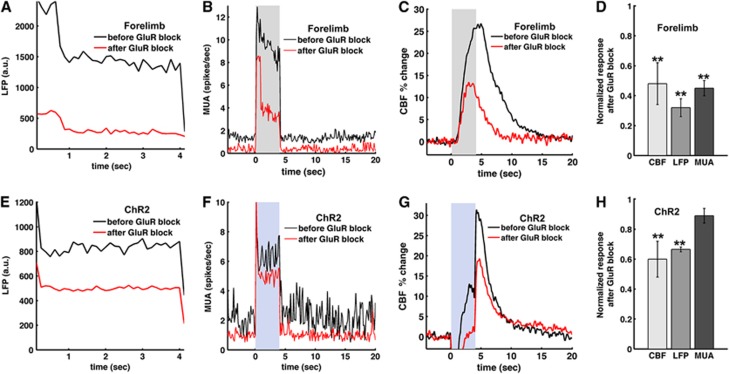Figure 7.
Role of the post-synaptic glutamate receptors (GluRs) in the light-evoked and forelimb neural activities and hemodynamic responses. Glutamate receptor antagonists were topically applied in three animals to block AMPA and NMDA GluRs for forelimb (A–D) and light stimulation (E–H). Group-averaged time courses of simultaneously measured local field potential (LFP) (A, E), multiunit activity (MUA) (B, F) and cerebral blood flow (CBF) (C, G) were plotted before (black) and after blocking GluR (red). Shaded area: 4-second forelimb stimulation or light stimulus (30 ms, 8 Hz, 2.5 mW). Normalized changes of CBF, LFP, and MUA after the GluR block (D, H) show that LFP is a better correlate of CBF. Error bars: s.e.m; **P<0.01 compared with the predrug response (paired t-test).

